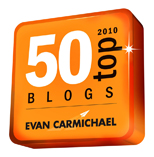Business documents possess a lot of difficult phrases and expressions, they come in different shapes and sizes – e-mails, resolutions, circular letters, offers, recommendations, complaints etc. They require concentration during the reading and a good foundation in business related issues.
When you are reading a whole new document, you should pay attention to the following key points:
--- What are the main ideas of the document?
--- What facts are stated?
--- How many people are involved?
--- What new ideas can I infer from this document?
--- Do I have additional questions? Who may I ask? How to gather additional information?
--- What is author’s attitude or opinion?
In the workplace information seems to come from all directions. Correspondence arrives through fax machines, mails, e-mails and overnight delivery.
Bellow you find great advices how to handle informational overload:
#1. Identify main ideas of the reading section. A good method for developing fast perceiving of what you read is the skimming technique. Skimming is done at a speed three to four times faster than normal reading. Skimming is useful when people have a great deal of material to read and a short amount of time or to quickly assure whether a document merits a closer read.
Skimming strategies:
--- Read the first and the last paragraphs of the document first.
--- Scan the subject if you are reading an e-mail
--- Notice titles / headings / subheadings
--- Look at the illustrations, graphs or other visuals on the page
--- Read the first sentence of each paragraph
--- Read the captions of the visuals
Scanning is another technique you can master in order to read quickly and find information. Scanning involves moving your eyes quickly down the page seeking specific words and phrases. Once you've scanned the document, you might go back and skim it. When scanning, look for the author's use of organizers such as numbers, letters, steps, or the words - first, second, or next. Look for words that are bold faced, italics, or in a different font size, style, or color. Sometimes the author will put key ideas in the margin.
In most sources it’s not directly mentioned but scanning often comes before skimming.
#2. Identify supporting ideas of the reading section. Supporting details are the facts and ideas that explain or prove the topic sentence or main idea.
#3. Determine whether information presented in the document is presented as fact or opinion. Try to distinguish
--- how important is the information
--- what are the deadlines for finishing a task
--- how many people are involved
--- what key roles and function do other people have.
Analyzing facts, opinions, recommendations, views and disagreements helps the reader to collect detailed information and have a clear judgment on the current situation.
#4. Draw inferences and implications from the directly stated content of the business document.
Determine the author’s attitude toward material discussed in the document.
#5. Generalization
Recognize or predict ideas or situations that are similar to what has been presented in the document.
Draw conclusions & apply ideas!








0 Responses to How to master full reading skills?